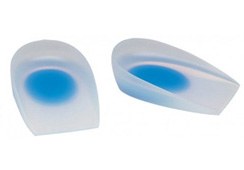Plantar Fasciitis – Key Hole Surgery
Plantar fasciitis is a common problem that causes pain under the heel bone often with lengthy walks and prolonged standing. It is most often seen in middle-aged men and women.
Plantar fascia is a thick band of tissue that lies at the bottom of the foot. It runs from the heel bone to the toe and forms the arch of the foot. The plantar fascia functions as a shock absorber and also supports the arch of the foot.
Causes
Too much of pressure over the fascia may damage or tear away the tissue and can be a cause of heel pain. It is also possible that when the plantar fascia gets overstretched or overused repeatedly, there may be irritation or inflammation of the fascia. Inflammation of the plantar fascia causes plantar fasciitis.
The risk factors that can make you more prone to develop plantar fasciitis include obesity, foot arch problems such as flat feet and high arch, activities such as long-distance running, ballet dancing and dance aerobics, occupations that necessitate walking or standing on hard surfaces for long period of time and wearing shoes with poor arch support or thin-soled shoes.
Symptoms
The most common symptom of plantar fasciitis is stabbing pain on the bottom of the foot near the heel. The pain develops gradually and may involve either one or both feet at the same time. Pain is usually worse in the morning or may aggravate after standing up for a long time.
Diagnosis
Mr Gordon will examine your foot and will check for the signs of flat feet or high arches, tenderness, swelling and redness of the foot and stiffness or tightness of the arch in the bottom of your foot.
Mr Gordon may suggest an X-ray or MRI scan to rule out other causes of heel pain such as a stress fracture or pinched nerve.
Treatment
Most patients with plantar fasciitis are effectively treated with the following measures:
- Medications: Mr Gordon may prescribe non steroidal anti-inflammatory drugs (NSAIDs) as they can reduce your pain and inflammation. Corticosteroids can be injected directly into the plantar fascia which may offer pain relief and reduce inflammation.
- Rest: Decrease or avoid the activities that worsen the pain.
- Ice: Apply ice pack over the painful area for at least twice a day for 10 – 15 minutes, for the first few days.
- Night splints: Use of night splints is beneficial as it stretches the plantar fascia and allows it to heal.
- Silicon gel heel cups: Placed in the shoe, these can help alleviate the pressure and pain under the heel
- Supportive shoes and orthotics: Mr Gordon may recommend you to wear shoes with good support and cushioning. Custom orthotics (shoe inserts) may also be helpful.
- Physical therapy: Mr Gordon recommends a program that focuses on stretching your plantar fascia and Achilles tendon. Please click here for these exercise. These exercises may help to stretch and strengthen the muscles of lower leg.
- Extracorporeal shock wave therapy: During this procedure, sound waves are targeted to the painful area to stimulate the healing process in the damaged plantar fascia tissue.
 |
 |
|
Night splint and Strasburg Socks |
Plantar Fasciitis Heel Cups |
Keyhole Surgery
Rarely, surgery to release the tight plantar fascia may be needed. However it is recommended only after all nonsurgical measures have failed. Mr Gordon performs this using a keyhole technique which is a minimally invasive, day case procedure and allows for a faster rehabilitation and return to normal function, compared with traditional ‘Open’ techniques.
 Call for an Appointment
Call for an Appointment 





